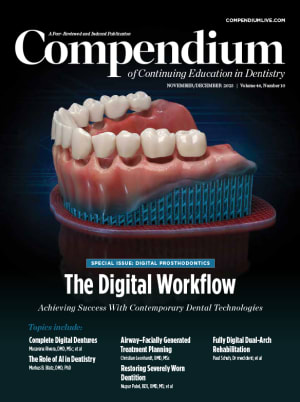Evidence-Based Guide Bridges Adhesive Chemistry With Clinical Application
This new edition addresses those challenges head-on by delivering a clear, evidence-based guide that bridges complex chemistry with practical clinical application.
The second edition of Principles of Adhesion Dentistry by Byoung I. Suh, DMD, PhD, offers a timely and critical resource for general dentists seeking to deepen their understanding of adhesive materials and clinical protocols. As adhesive dentistry becomes more central to everyday restorative work, clinicians face an overwhelming number of product choices, technique variations, and evolving material science. This new edition addresses those challenges head-on by delivering a clear, evidence-based guide that bridges complex chemistry with practical clinical application.
Suh, a research chemist and the founder of BISCO, explains that this updated edition reflects significant advances in both material science and clinical practice. “While maintaining the educational clarity and research-based data of the original version, this edition brings the content fully up to date for today’s practicing dentists,” he says. Dentists will find expanded and reorganized content that includes comprehensive coverage of 8th-generation universal adhesives, with detailed information on their chemical structure, clinical performance, and best-practice bonding protocols. For the general dentist, this means improved decision-making when selecting adhesives and understanding their correct indications.
The new edition of Principles of Adhesion Dentistry includes added in-depth information on bonding to two of the most widely used indirect restorative materials—lithium disilicate and zirconia. These materials have become increasingly prevalent in general practice, yet many practitioners, Suh suggests, remain unsure about proper bonding protocols. “This edition details their distinct bonding requirements and presents clinically proven techniques using today’s leading commercial products,” he says.
The book also includes comparative tables that allow readers to evaluate popular dental materials like resin cements and adhesives based on scientific and clinical performance, not just brand reputation. Suh says the book connects the “why” behind the materials with the “how” of their clinical use.
Suh’s new edition contains updated guidance on current light-curing devices to help ensure successful polymerization—a crucial factor in long-term bond durability. It also addresses common misconceptions about adhesion, especially the idea that all bonding agents are the same. “The book explains the chemistry and the differences in formulations so dentists can apply these nuances to their bonding protocols,” Suh notes.
The structure of the book—dividing each topic into clinical significance, in-depth information, and a summary—makes the content comprehensible even to those without a strong background in material science. Suh emphasizes that understanding what causes an adhesive to perform well is essential to becoming a better clinician. For general dentists, this can translate into gaining greater confidence in material selection, improving restorative outcomes, and ultimately providing more durable, long-lasting care.
By connecting research insights with day-to-day clinical needs, Principles of Adhesion Dentistry, second edition, delivers a practical and scientifically grounded tool for any general dentist committed to mastering modern adhesive techniques. The book is available at biscobookstore.com.
Byoung I. Suh, DMD, PhD
Founder and President, BISCO
The updated guide delivers a practical and scientifically grounded tool for any general dentist committed to mastering modern adhesive techniques.
BISCO
800-247-3368
bisco.com
